Ancient Great City Of Ani: Lost Capital Of The Kingdom Of Armenia And Its Mysterious Underground Tunnels
A. Sutherland - AncientPages.com - Armenia's splendid city of Ani was once a powerful and flourishing place situated on several trade routes.
Founded more than 1,600 years ago, it grew to become a walled city of more than 100,000 residents by the 11th century and became the rival of Constantinople, Baghdad, and Damascus.
Church of Saint Gregory (King Gagik), Ani, Turkey. Image credit: Ego - Public Domain
The ancient Ani was once the capital of a medieval Armenian kingdom that covered much of present-day Armenia and eastern Turkey.
Unfortunately, wars and hostile invasion forces put a definite end to its prosperity. The first settlement in Ani dates back to 3,000 BC, and its history was home to nearly two dozen civilizations.
Today, the remains of the lost capital of Armenia include forgotten ruins scattered over a vast area.
Remains of an ancient bridge below Ani photographed on June 19, 2011. Armenia is on the right, Turkey on the left. Credit: (CC BY SA Martin Lopatka)
Not long ago, Armenian archaeologists unearthed secret water channels, mysterious monk cells, meditation rooms, huge corridors, intricate tunnels, traps, and corners under the ruins of the ancient city.
Situated on several trade routes on the eastern border of Turkey, across the Akhurian River from Armenia, the ancient city of Ani was once called the "City of 1,001 Churches" or the "City of Forty Gates."
The location was one of the reasons why Ani and the surrounding region were conquered hundreds of times. Byzantine emperors, Ottoman Turks, Armenians, nomadic Kurds, Georgians, and Russians claimed and reclaimed the area, repeatedly attacking and chasing out residents.
Illustration of Ani, the capital city of the medieval Armenian kingdom of the Bagratuni dynasty (961 C.E.)
Ani was sacked by the Mongols in 1236. Ani never recovered from a devastating 1319 earthquake and, more significantly, from the shifting of regional trade routes. By the 1300s, Ani was in steep decline.
Renowned for its splendor and magnificence, Ani was abandoned by the 17th century, and largely forgotten in the sixteenth and seventeenth centuries.
It was rediscovered in the 19th century, and the city had a brief moment of fame. However, Ani was closed off by World War I.
 The Church of the Redeemer- Image credit: Ggia - CC BY-SA 3.0
The Church of the Redeemer- Image credit: Ggia - CC BY-SA 3.0
Shortly after World War I, Turkish officials ordered the obliteration of Ani's monuments, which were within Turkey's borders by then.
The ruins crumbled at the hands of many looters and vandals; fortunately, the Ani was not erased from history.
Archaeologists excavating in the region uncovered the secrets of "underground Ani." While digging at one of the underground tunnels in Ani, George Ivanovic Gurdjieff, who spent most of his childhood and youth in Kars, noticed that the soil became different.
He and his friend Pogosyan continued digging and discovered a narrow tunnel. But the end of the tunnel was closed off with stones. They cleaned the rocks and found a room with decayed furniture, broken pots, and pans.
They also found a scrap of parchment in a niche. As they continued digging, they stumbled upon a famous Mesopotamian school used in the sixth and seventh centuries.
 Ruins of the Mausoleum of the Child Princes in the Citadel in Ani, on April 19, 2011. Located in the Inner Fortress on Citadel Hill, this structure is thought to have been built around 1050 AD. (CC BY SA Georgios Giannopoulos
Ruins of the Mausoleum of the Child Princes in the Citadel in Ani, on April 19, 2011. Located in the Inner Fortress on Citadel Hill, this structure is thought to have been built around 1050 AD. (CC BY SA Georgios Giannopoulos
Another important discovery made by the digging archaeologists were secret tunnels beneath the ancient Ani city.
They also found letters written in ancient Armenian and belonging to monks.
The Alem village is home to 15 rock paintings that have never been examined and belong to humanity. Credits: AA Photos
As confirmed by Italian excavators in 1915, underground Ani had a school, a monastery, rock houses, monk cells, water channels, meditation rooms, and more than 500 meters (1,600 ft) of complex tunnels. At least 823 structures and caves have been identified in underground Ani.
The rock paintings will play a significant role in the ruins of Ani to be included in the UNESCO list in 2016. Credits: AA Photo
In a village located close to the ancient city of Ani, archaeologists also discovered fifteen interesting rock paintings. This ancient rock art depicts hunting scenes with horses, dogs, mountain goats, deer, and humans.
No doubt many more archaeological finds are still hidden beneath the ancient city of Ani. They remain yet to be unearthed. There are likely many more undiscovered underground structures that archaeologists will unearth in the future.
Written by – A. Sutherland - AncientPages.com Senior Staff Writer
Updated on December 21, 2022
Copyright © AncientPages.com All rights reserved. This material may not be published, broadcast, rewritten or redistributed in whole or part without the express written permission of AncientPages.com
More From Ancient Pages
-
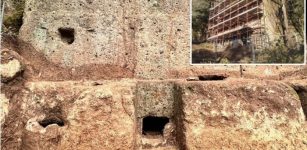 Who Is Buried In The Giant Etruscan Tomb At San Giuliano Necropolis?
Archaeology | Mar 13, 2024
Who Is Buried In The Giant Etruscan Tomb At San Giuliano Necropolis?
Archaeology | Mar 13, 2024 -
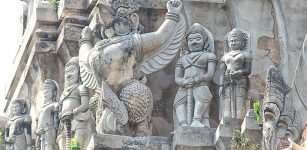 Sacred Bird Garuda And Stealing Of Amrita Drink Of Immortality From The Gods
Featured Stories | Jun 5, 2019
Sacred Bird Garuda And Stealing Of Amrita Drink Of Immortality From The Gods
Featured Stories | Jun 5, 2019 -
 The Boomerang Was Used 20,000 Years Ago By Stone Age People
Ancient History Facts | Sep 28, 2018
The Boomerang Was Used 20,000 Years Ago By Stone Age People
Ancient History Facts | Sep 28, 2018 -
 Ancient Mystery Of The American Southwest – Secrets Of The Cliff Dwellers – Part 1
Ancient Mysteries | Jul 23, 2018
Ancient Mystery Of The American Southwest – Secrets Of The Cliff Dwellers – Part 1
Ancient Mysteries | Jul 23, 2018 -
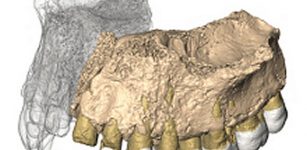 Earliest Modern Human Fossil Outside Africa Unearthed At Misliya Cave, Israel
Archaeology | Jan 27, 2018
Earliest Modern Human Fossil Outside Africa Unearthed At Misliya Cave, Israel
Archaeology | Jan 27, 2018 -
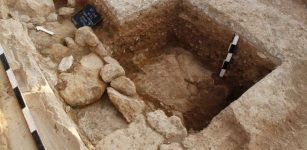 Oldest Houses Of Nea Paphos In Cyprus – Discovered
Archaeology | Apr 12, 2017
Oldest Houses Of Nea Paphos In Cyprus – Discovered
Archaeology | Apr 12, 2017 -
 2,000-Year-Old Historical Tombs Unearthed In Close Vicinity To Ancient City Of Laodicea
Archaeology | Jan 23, 2020
2,000-Year-Old Historical Tombs Unearthed In Close Vicinity To Ancient City Of Laodicea
Archaeology | Jan 23, 2020 -
 Beautiful Legend Of Giant Olentzero Who Brings Christmas Presents To Basque Children
Christmas Traditions | Dec 19, 2024
Beautiful Legend Of Giant Olentzero Who Brings Christmas Presents To Basque Children
Christmas Traditions | Dec 19, 2024 -
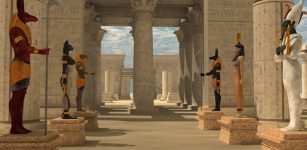 Zep Tepi – When Gods Established Their Kingdom On Earth In Egypt
Egyptian Mythology | May 23, 2021
Zep Tepi – When Gods Established Their Kingdom On Earth In Egypt
Egyptian Mythology | May 23, 2021 -
 Unique 3,300-Year-Old Hittite Bracelet With Symbols Discovered By Farmer
Archaeology | Mar 28, 2022
Unique 3,300-Year-Old Hittite Bracelet With Symbols Discovered By Farmer
Archaeology | Mar 28, 2022 -
 Mysterious Standing Deer Stones Of Mongolia -Their Purpose And Creators Remain Unknown
Ancient Mysteries | Jun 18, 2014
Mysterious Standing Deer Stones Of Mongolia -Their Purpose And Creators Remain Unknown
Ancient Mysteries | Jun 18, 2014 -
 On This Day In History: ‘Sea King’ Ragnar Lodbrok Seizes Paris – On March 28, 845
Featured Stories | Mar 28, 2016
On This Day In History: ‘Sea King’ Ragnar Lodbrok Seizes Paris – On March 28, 845
Featured Stories | Mar 28, 2016 -
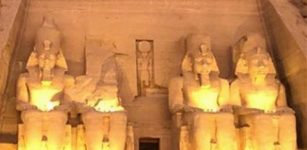 Magnificent Solar Alignment Phenomenon In Abu Simbel – The Sun Illuminates The Face Of Pharaoh Ramses II
Featured Stories | Nov 11, 2020
Magnificent Solar Alignment Phenomenon In Abu Simbel – The Sun Illuminates The Face Of Pharaoh Ramses II
Featured Stories | Nov 11, 2020 -
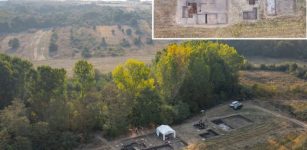 8,000-Year-Old House Remains Discovered In Svinjarička Čuka, Serbia Raise Questions About Europe’s First Farmers
Archaeology | Oct 21, 2024
8,000-Year-Old House Remains Discovered In Svinjarička Čuka, Serbia Raise Questions About Europe’s First Farmers
Archaeology | Oct 21, 2024 -
 DNA Says You’re Related To A Viking, A Medieval German Jew Or A 1700s Enslaved African? What A Genetic Match Really Means
DNA | Jun 7, 2024
DNA Says You’re Related To A Viking, A Medieval German Jew Or A 1700s Enslaved African? What A Genetic Match Really Means
DNA | Jun 7, 2024 -
 Mysteries Of The Huldufolk – The Hidden People Of Iceland
Featured Stories | Feb 1, 2022
Mysteries Of The Huldufolk – The Hidden People Of Iceland
Featured Stories | Feb 1, 2022 -
 Champa’s Megalithic City My Son And The Nagas Inscription That Could Re-Write History
Ancient Mysteries | Jan 27, 2018
Champa’s Megalithic City My Son And The Nagas Inscription That Could Re-Write History
Ancient Mysteries | Jan 27, 2018 -
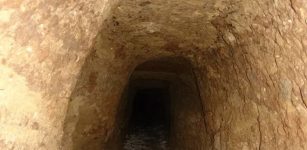 Huge 40-Meter Long 16th Century Tunnel For Looting Was Exposed Inside Tower Tomb
Archaeology | Jul 15, 2019
Huge 40-Meter Long 16th Century Tunnel For Looting Was Exposed Inside Tower Tomb
Archaeology | Jul 15, 2019 -
 Constructing Noah’s Ark – Re-Examination Of The Original Biblical Wording
Biblical Mysteries | Feb 1, 2018
Constructing Noah’s Ark – Re-Examination Of The Original Biblical Wording
Biblical Mysteries | Feb 1, 2018 -
 House Of Borgia – The Most Infamous Family Of Renaissance Italy
Featured Stories | Feb 28, 2019
House Of Borgia – The Most Infamous Family Of Renaissance Italy
Featured Stories | Feb 28, 2019






